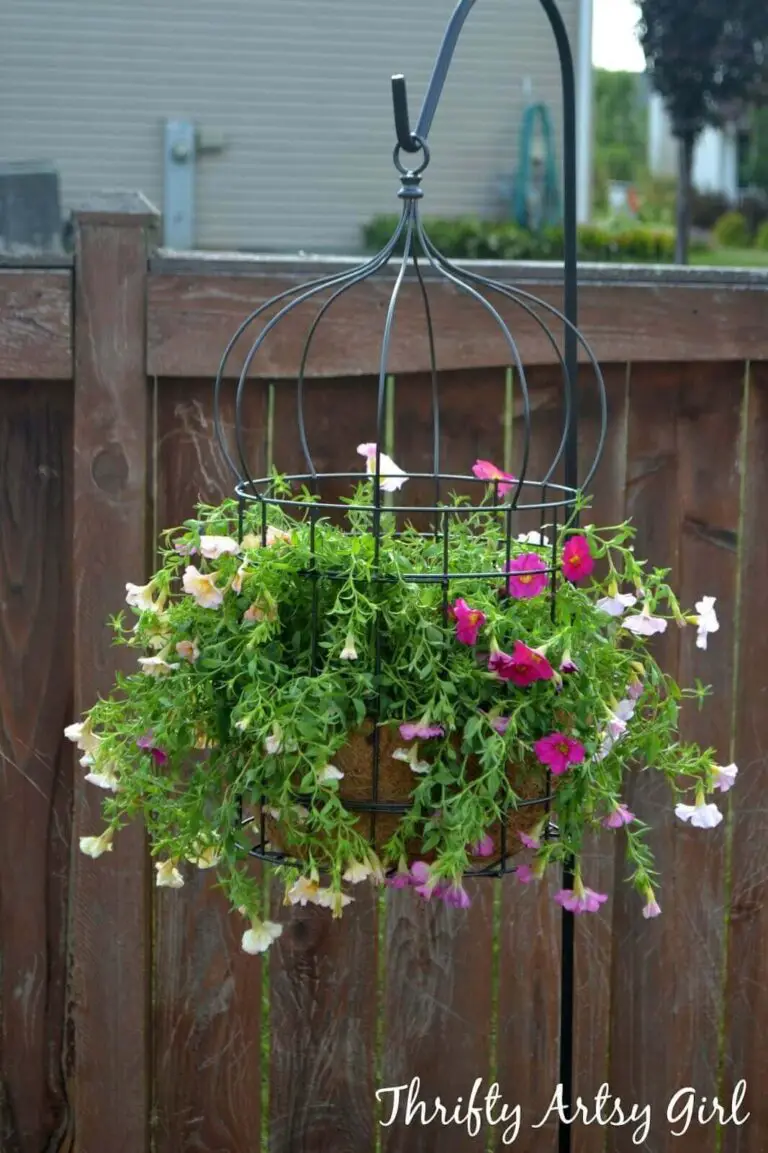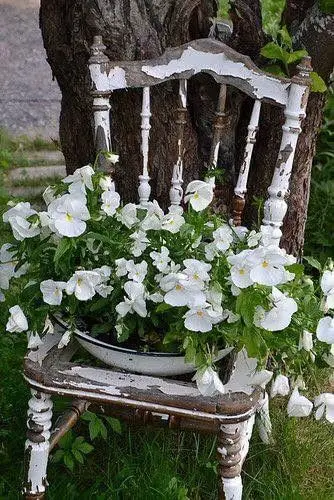22+ Different Types Of Agave Plants: Which One Is Right For You?
When it comes to succulents, few plants offer the same level of versatility and beauty as agave. With over 20 different species to choose from, each with its unique characteristics, selecting the right one for your home or garden can be overwhelming. In this article, we’ll delve into the world of agaves, exploring their various types and features, helping you make an informed decision about which variety is best suited for your needs.
We’ll examine the distinctive traits of different species, including American Century Agave, Blue Agave, Butterfly Agave, Cabbage Head Agave, Caribbean Agave, Desert Agave, Ferocious Giant Agave, Foxtail Agave, Hedgehog Agave, Mountain Agave, Octopus Agave, Rancho Tambor Agave, Royal Agave/Queen Victoria Agave, Shaw’s Agave, Sisal, Small Flower Agave, Smooth Agave, Squid Agave, Thorncrest Century Plant, and Thread-Leaf Agave.
Whether you’re a seasoned gardener or just starting out, understanding the different types of agaves can help you create a stunning and low-maintenance landscape.
What is an agave plant?
Agave succulents are renowned for their striking features, boasting thick, fleshy leaves that set them apart from other plants. As members of the agave family, they exhibit a unique blend of ruggedness and elegance. Beyond their aesthetic appeal, these versatile plants can be utilized in various settings – both indoors and outdoors. They make excellent additions to gardens or indoor landscapes, serving as effective hedges or borders.
How many types of agave are there?
While there are over 200 species of agave plants, only a select few are commonly utilized in landscaping. Among the most popular varieties are the century plant, blue agave, and Spanish Dagger. Each type of agave boasts distinctive traits that render them particularly well-suited for specific applications.
How do I identify agave?
Agave plants boast striking features, most notably their sturdy, sword-shaped leaves that taper into sharp points. These leaves often display vibrant hues of green or blue, sometimes with intricate variegated patterns. In stark contrast to the leafy foliage, the show-stopping flowers burst forth from the plant’s center on a tall stalk, measuring up to six feet in diameter. Typically, these blooms radiate a bright yellow or orange glow.
Different Types of agave plants
While agave plants share some common characteristics, they exhibit remarkable diversity through various species and cultivars. Within this botanical family, several prominent types stand out for their distinct traits. Let’s take a brief look at some of the most well-known varieties:
American Century Agave (Agave americana)

The American Century agave, a striking plant, boasts impressive stature with some specimens reaching six feet in height. Its broad, vibrant green leaves and towering stalk with a prominent bulb at the top make it an ideal choice for landscaping or serving as a garden centerpiece. With its adaptable nature, this slow-growing agave can thrive without demanding excessive maintenance, requiring only occasional care and being naturally drought-resistant.
In fact, it may take up to ten years for the American Century agave to reach its maximum size, but patience will be rewarded with a majestic addition to your outdoor space.
Blue Agave (Agave tequilana)

The blue agave’s reputation as a tequila-producing powerhouse stems from its distinctive appearance. Its slender, bluish-green leaves stretch out like a verdant carpet, while a prominent stalk with a rounded top rises majestically from the center. While this variety thrives in warm climates, its unique characteristics make it an attractive choice for cultivating in ideal conditions.
Butterfly Agave (agave potatorum)

Butterfly agave stands out with its stunning pink and yellow markings on the leaves, a unique feature that sets it apart from other varieties. Its compact size makes it an ideal choice for those with limited space, offering a beautiful addition to any garden without overwhelming the surrounding area. This slow-growing agave requires minimal maintenance, as it doesn’t need frequent pruning or transplanting.
Instead, it thrives in full sun and well-drained soil, tolerating temperatures as low as 20 degrees Fahrenheit. Its drought tolerance makes it perfect for xeriscaping or low-maintenance gardens. The butterfly agave’s rosette shape features long, thin leaves with bright white edges and black tips that resemble the delicate wings of a butterfly. The plant blooms once, producing a striking spike of yellow flowers before eventually dying off.
However, it often produces offsets beforehand, allowing you to propagate new plants. This striking addition to any garden is sure to spark conversations and add visual interest. Its unique features, combined with its low-maintenance requirements, make the butterfly agave an excellent choice for busy gardeners or those looking to add a pop of color to their outdoor space.
Cabbage Head Agave (agave parrasana)

The Cabbage Head agave is an exceptional plant among gardening enthusiasts due to its remarkable hardiness. This variety can thrive in both scorching heat and frigid cold, making it an excellent choice for gardens across the country. Moreover, it requires minimal water, making it a perfect option for individuals living in arid climates.
This stunning agave boasts broad, blue-green leaves that form a large rosette at the top of its stem, growing up to six feet tall.
The plant’s unique feature is its once-in-seven-to-ten-year blooming cycle, where it sends up a tall stalk covered in vibrant yellow flowers.
As an added benefit, this agave is a slow grower but can live for up to fifty years. Its exceptional drought tolerance and ability to withstand temperatures as low as ten degrees Fahrenheit make it an ideal choice for gardens in hot, dry climates.
The Cabbage Head agave is an excellent addition to any garden or landscape, injecting a touch of beauty and sophistication into the setting. If you’re seeking a resilient, visually stunning agave that can thrive in challenging environments, this plant is the perfect choice. Its elegant appeal will surely captivate your audience.
Caribbean Agave (Agave angustifolia)
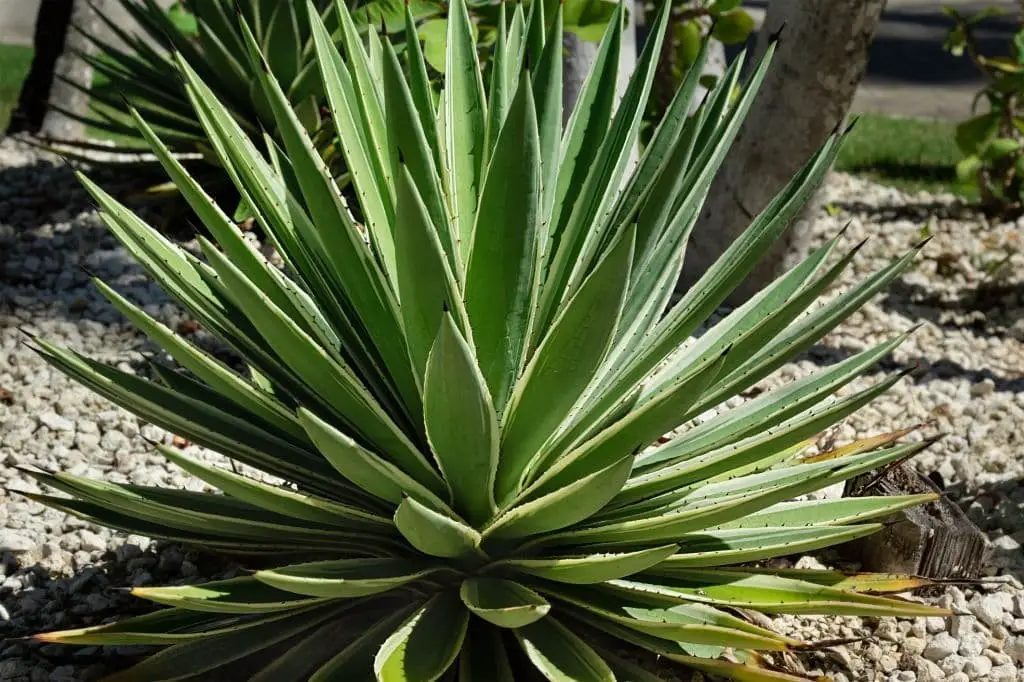
When it comes to growing an agave quickly, the Caribbean variety is a top choice among enthusiasts. This succulent can grow up to six feet tall, making it perfect for those who want to make a statement with their plants. To thrive, Caribbean agave requires full sun and regular watering, conditions that allow its striking gray-green leaves to flourish. Native to Mexico and Central America, this plant is well-suited to dry climates where sunlight abounds.
Its long, slender leaves are a distinctive feature of the Caribbean agave, as is the tall flower stalk that produces clusters of bright yellow blooms. Not only does this attractive succulent add visual interest to any landscape or garden, but it’s also drought-tolerant – a quality that makes it an excellent choice for those who want low-maintenance plants.
Desert Agave (Agave deserti)
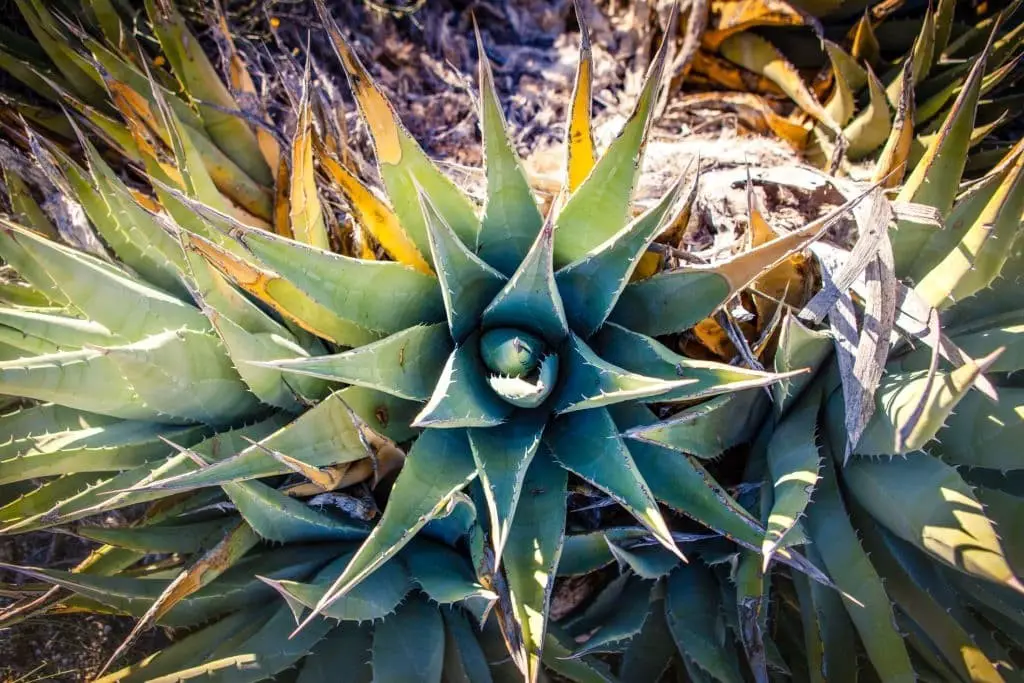
Desert agave, a stalwart species, has earned its reputation as a go-to choice for those seeking a resilient plant that can withstand the harsh conditions of hot and dry climates. Its remarkable ability to tolerate extreme temperatures, limited water supply, and resistance to pests and diseases make it an attractive option for gardeners living in areas prone to these issues.
Standing alone and reaching heights of up to 12 feet, the Desert agave boasts a striking greenish-gray trunk and robust, spiny leaves. A notable aspect of this species is its prolonged period of growth, requiring up to ten years before it finally produces an impressive inflorescence that can stretch as high as 18 feet.
Pollination by bats occurs on a single night, after which the agave’s life cycle comes to a close.
Despite its eventual demise, the Desert agave remains a prized choice for those seeking a towering plant that will eventually flower. Its suitability for desert climates and spacious growing conditions only add to its appeal.
Ferocious Giant Agave (Agave salmiana ferox)
For the bold and daring gardener, ferocious giant agave is an ideal choice. Its impressive stature reaches up to 25 feet high, commanding attention with its robust presence. This majestic plant thrives in full sunlight and demands consistent moisture, making it a true showstopper for any landscape.
Foxtail Agave (Agave attenuate)
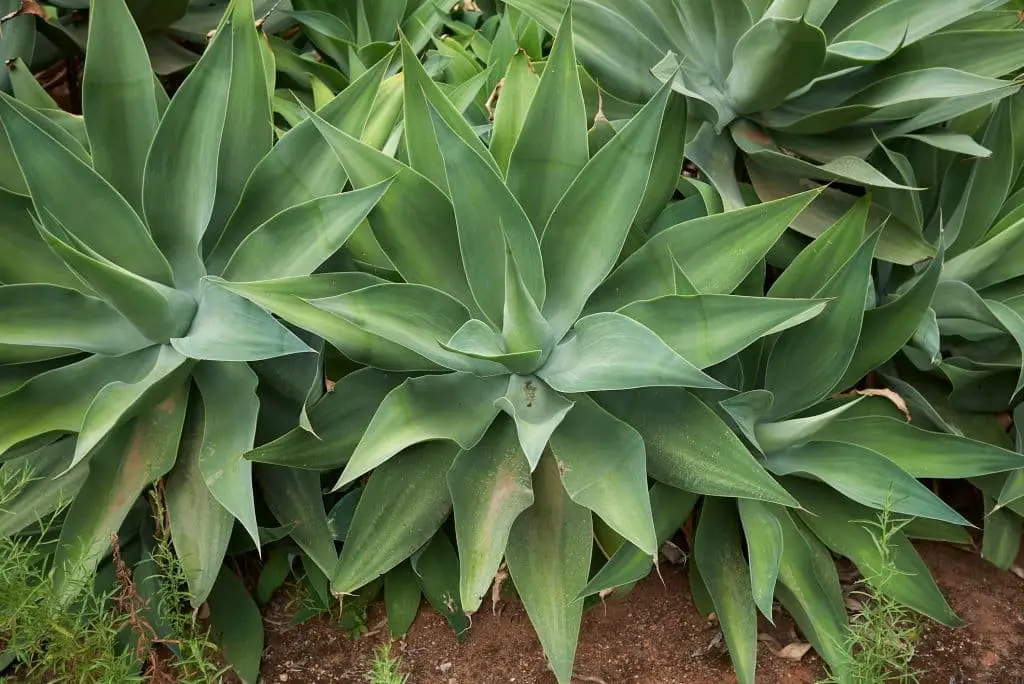
Foxtail agave’s impressive growth habit and striking appearance make it a popular choice among gardeners seeking a bold statement plant. Reaching heights of up to six feet, this variety is perfect for those who want to add some drama to their outdoor space. While it thrives in full sun, it’s also adaptable to partial shade, making it a versatile option for gardeners with varying sunlight conditions.
Its unique appearance is characterized by long, spear-like leaves that curve inward at the tips, featuring a subtle grayish-green hue. As late summer arrives, Foxtail agave produces a tall stalk adorned with bright yellow flowers, adding an extra layer of visual appeal to its already striking presence. Notably, this agave variety grows slowly and requires careful attention. It’s drought-tolerant, making it suitable for gardeners who prioritize water conservation.
However, it does require regular watering to maintain optimal health. Furthermore, the Foxtail agave is susceptible to damage from agave snout weevil, emphasizing the importance of vigilant monitoring and proper care. While this agave may not be the most low-maintenance option, its unique appearance and adaptability make it an attractive choice for gardeners willing to invest time and effort in its cultivation.
With proper care and attention, Foxtail agave can thrive and become a stunning centerpiece in any garden.
Hedgehog Agave (agave stricta)

Hedgehog agave has proven itself as an ideal option for gardeners seeking plants that can withstand scorching hot and arid conditions. Its remarkable resilience enables it to thrive under extreme temperatures, surviving with minimal watering. Moreover, its natural defenses render it impervious to pests and diseases, making it a reliable choice for those residing in areas plagued by these issues.
Mountain Agave (Agave Montana)

For those seeking to cultivate agave in colder environments, Mountain Agave is a top pick. This robust variety can withstand temperatures plummeting to a chilling -20°F (-29°C), making it an ideal selection for gardeners living in areas with harsh winters. To ensure optimal growth, provide full sun and maintain consistent moisture levels, as this agave thrives when well-watered.
Octopus Agave (Agave vilmoriniana)

The Octopus Agave stands out as a preferred option among those seeking an agave that thrives quickly. Notably, this variety has a growth rate that can see it reach impressive heights of up to six feet, making it an ideal choice for individuals looking to make a statement with their plant choices. As it excels in full sun, it necessitates regular watering to maintain optimal health.
Rancho Tambor Agave (agave titanota)
Rancho Tambor agave stands out as an exceptional option for gardeners seeking a hardy plant that can flourish in scorching hot and arid environments. Boasting impressive resilience, this variety is capable of withstanding extreme temperatures and water scarcity. Furthermore, it possesses natural resistance to pests and diseases, rendering it an attractive choice for individuals residing in regions where these issues are prevalent.
Royal Agave/Queen Victoria Agave (agave victoria-reginae)

For enthusiasts seeking a rapidly growing agave, the Royal agave/Queen Victoria agave is an excellent option. This variety has the unique ability to reach impressive heights of up to six feet, making it an ideal choice for those who desire a dramatic statement piece in their garden or indoor space. To thrive, this plant requires full sun exposure and consistent watering, ensuring its robust growth.
Shaw’s Agave (Agave shawii)
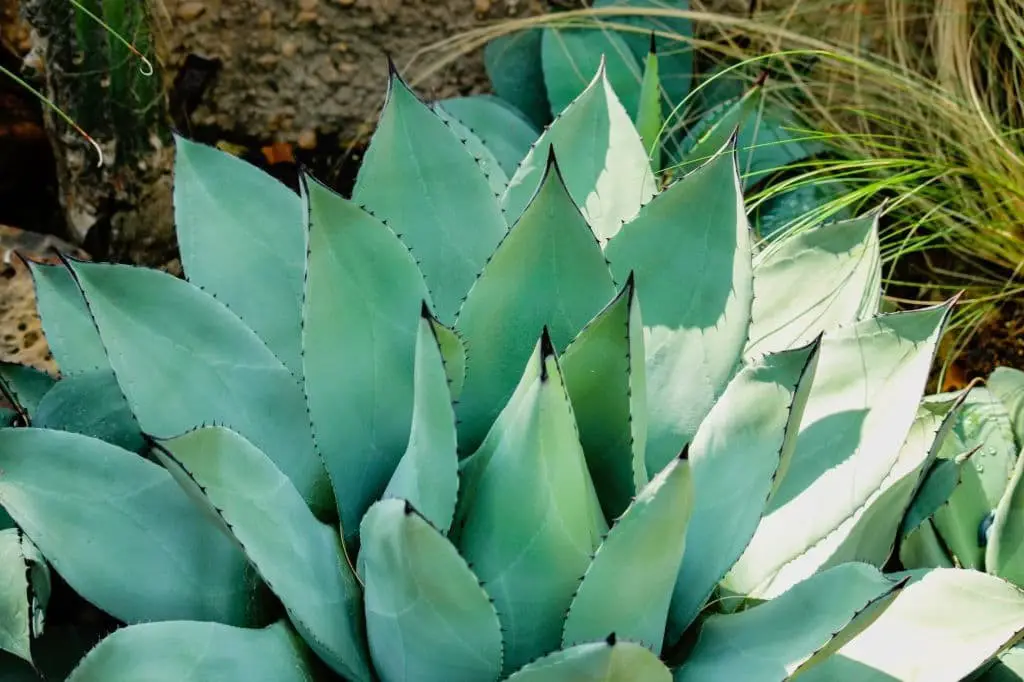
For gardeners seeking to grow agave in colder conditions, Shaw’s agave is a reliable option. Its exceptional hardiness allows it to withstand temperatures down to -20°F (-29°C), making it an ideal choice for those living in regions with cold winters. When grown in full sun, this variety requires consistent watering to maintain optimal health and appearance.
Sisal (Agave sisalana)
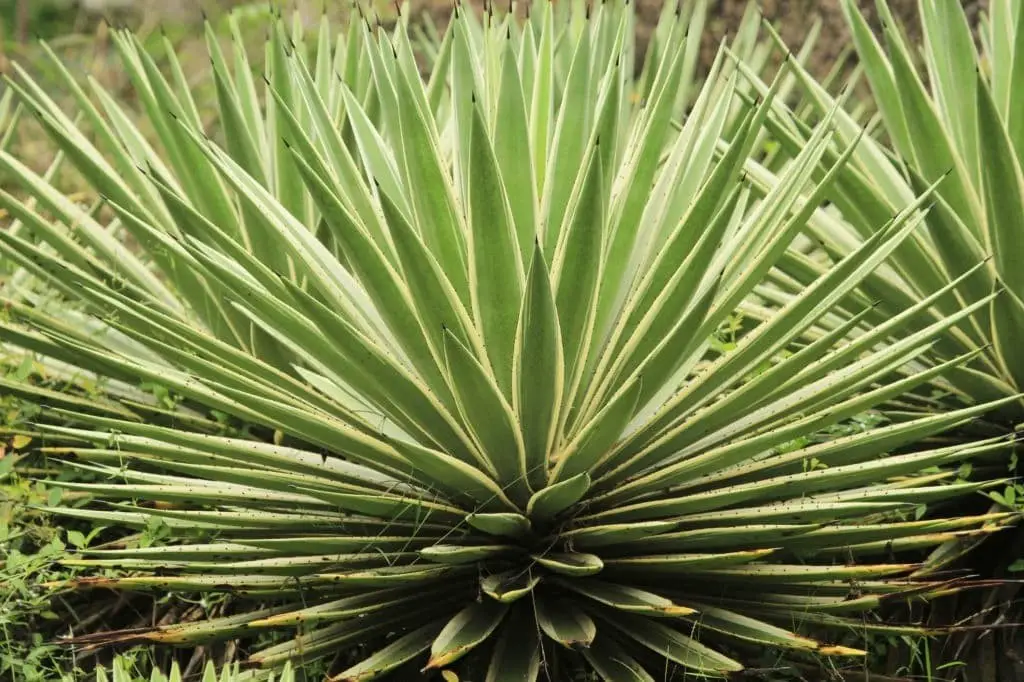
Sisal agave is an ideal choice for gardeners living in hot and arid regions, as it excels in extreme temperatures and low water conditions. This resilient variety is also naturally resistant to pests and diseases, making it a practical option for areas plagued by these issues. Beyond its impressive durability and strength, sisal agave has numerous industrial applications, such as furniture-making and construction projects, due to its remarkable ability to withstand wear and tear.
However, it’s essential to exercise caution when handling sisal, as its sharp point can be hazardous if proper care is not taken.
Small Flower Agave (agave parviflora)

The small flower agave is a sought-after option among gardeners looking for a rapid-growing agave variety. With its capacity to reach elevations of up to six feet, this species makes an ideal choice for those seeking a statement-making plant with a commanding presence. As it thrives in full sun and demands consistent watering, the small flower agave is perfect for gardeners willing to provide the necessary care and attention.
Smooth Agave (agave desmettiana)

For those seeking an agave that excels in scorching hot and arid conditions, smooth agave is an excellent option. This variety boasts extraordinary resilience, effortlessly withstanding extreme temperatures and limited water supply. Moreover, it exhibits robust resistance to pests and diseases, making it a prime choice for individuals residing in regions plagued by these issues.
Squid Agave (agave bracteosa)

Squid agave is a prized option for garden enthusiasts seeking a fast-growing agave species. Its remarkable ability to reach elevations of up to six feet makes it an ideal choice for those looking to create a bold, eye-catching focal point in their outdoor space. To optimize its growth and thrive, this variety excels in full sun conditions and demands consistent moisture.
Thorncrest Century Plant (agave lophantha)
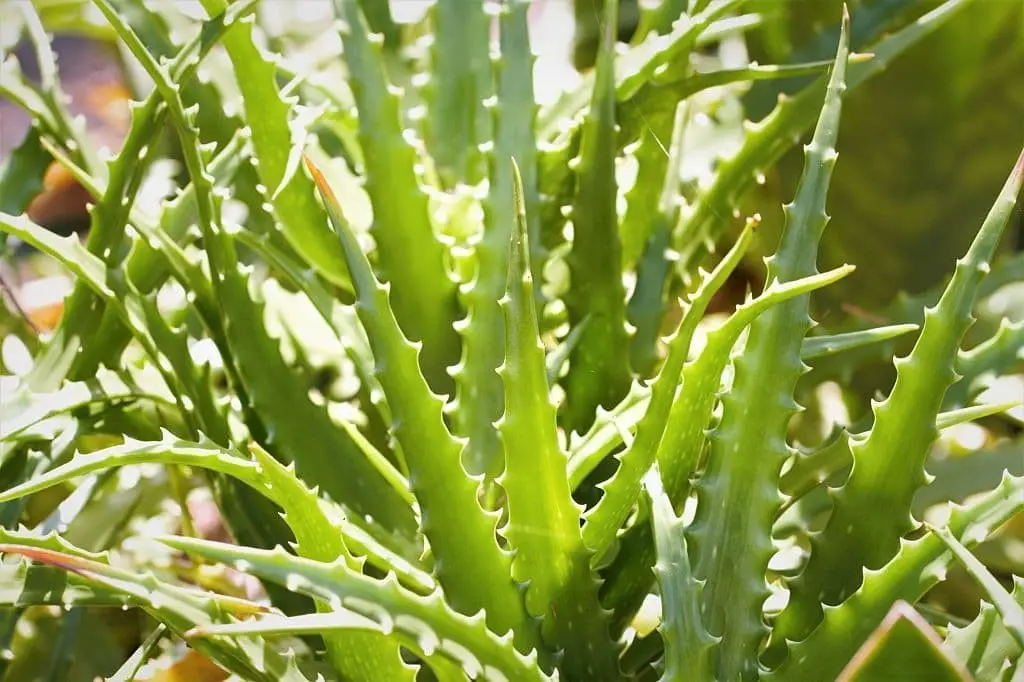
The Thorncrest century plant stands out as a reliable option for growers seeking agaves that can flourish in cold climates. This variety boasts exceptional hardiness, capable of withstanding temperatures as low as -20 degrees Fahrenheit. To optimize its growth, provide it with full sun and maintain regular watering.
In terms of appearance, the Thorncrest Century Plant is characterized by its impressive size, reaching up to six feet tall, and featuring broad, sword-like leaves.
While it may not be a rapid grower, this agave has an impressive lifespan of up to fifty years.
One notable feature of the Thorncrest Century Plant is its infrequent but striking bloom cycle, which occurs every ten years. The vibrant orange-yellow flowers that emerge during this period add a pop of color to any garden. Furthermore, this agave exhibits remarkable drought tolerance and thrives in hot, sunny climates.
Its natural resistance to pests and diseases also makes it an attractive choice for growers seeking low-maintenance plants. If you’re looking to introduce an exotic element to your garden, the Thorncrest Century Plant is certainly worth considering.
Thread-Leaf Agave (Agave filifera)

Thread-leaf agave stands out as an ideal option for those seeking a hardy plant that can flourish in scorching, arid environments. Its remarkable resilience allows it to withstand extreme temperatures and minimal watering, making it an excellent choice for regions plagued by drought.
This variety’s impressive durability also extends to its immunity against pests and diseases, providing peace of mind for gardeners in areas where these issues are prevalent.
Twin-Flowered Agave (Agave geminiflora)

Twin-flowered agave is a standout choice for gardeners seeking a striking succulent that grows rapidly. This variety can reach impressive heights of up to six feet, making it perfect for those who want to make a bold statement in their landscape. It thrives in full sun and requires consistent watering. The Twin-Flowered Agave boasts sword-like leaves and delicate pink flowers, offering an exotic touch to any garden.
Whether grown in the ground or a container, this agave is sure to captivate with its unique appearance. While it prefers full sun, Twin-Flowered Agaves can tolerate some light shade and are remarkably drought-tolerant once established. They can be easily propagated through division or stem cuttings. This captivating plant will undoubtedly add visual interest to any garden.
For the gardener seeking an exotic addition, the Twin-Flowered Agave is a fantastic option that can thrive in various settings. With its unique appearance and impressive growth rate, this agave is definitely worth considering for those looking to add some drama to their landscape.
Whale’s Tongue Agave (Agave ovatifolia)
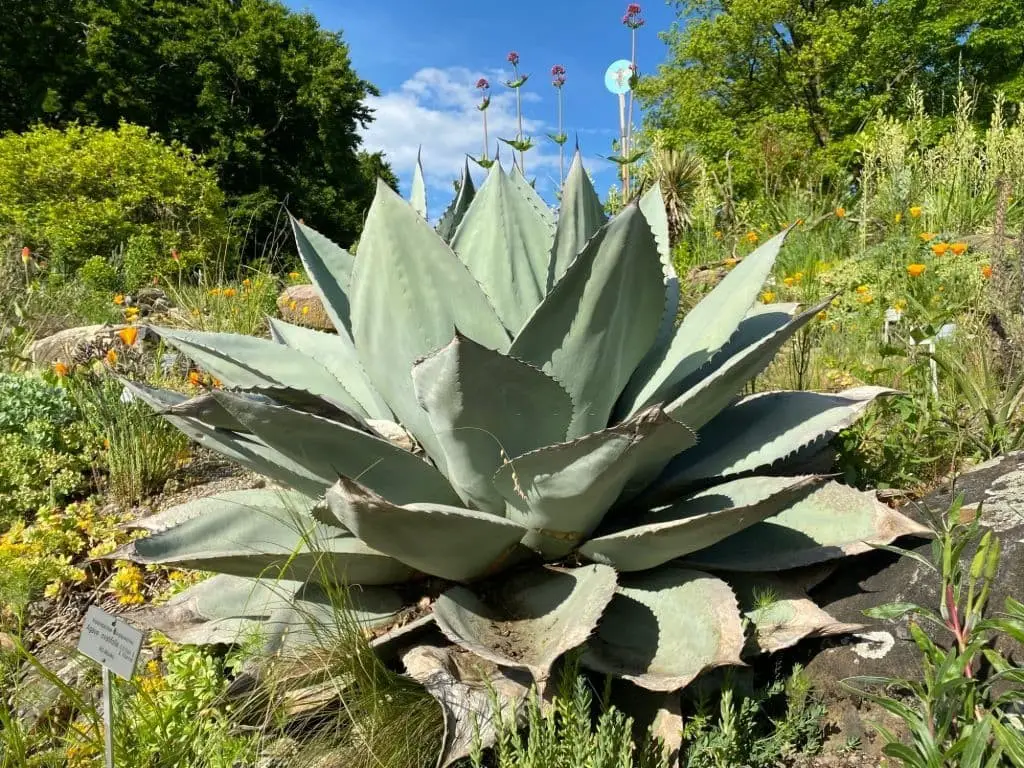
Whale’s Tongue Agave stands out as an exceptional choice for gardeners seeking succulents that can withstand chilly temperatures. This variety boasts remarkable hardiness, able to tolerate frigid temperatures dipping down to -20 degrees Fahrenheit. While it excels in full sun exposure and regular watering, it’s essential to note its specific needs. This succulent is characterized by broad, emerald-green leaves that gradually taper into a pointed tip.
Whale’s Tongue Agave can grow quite tall, reaching heights of up to six feet. In the spring, it produces a striking flower stalk, which attracts pollinators like bats and hummingbirds. The resulting fruit is not only visually appealing but also edible. A notable advantage of Whale’s Tongue Agave is its natural drought tolerance, making it an attractive addition to any garden seeking low-maintenance beauty.
Agave care guide
Agave plants are remarkable for their adaptability to various environments. While they flourish in full sun, they’re surprisingly resilient to partial shade as well. What’s more, these succulents require mere sips of water to survive, making them a low-maintenance addition to any garden. In terms of nourishment, agaves benefit from an annual dose of all-purpose fertilizer. When it comes to propagation, agave plants offer two convenient methods.
The first involves carefully removing offsets from the mother plant and replanting them in well-draining soil. Alternatively, you can take stem cuttings and root them in water, allowing the new growth to sprout. Both techniques provide a simple and effective way to multiply these striking plants.
Yucca vs Agave
While both yucca and agave are succulents, they exhibit distinct characteristics. Yuccas tend to grow taller with narrower leaves, in contrast to the shorter stature of agaves accompanied by broader foliage. A notable difference between the two is the production of a flower stalk by agaves during springtime, whereas yuccas do not display this feature. Furthermore, agave plants are remarkably drought-tolerant, requiring minimal water to thrive, whereas yuccas necessitate more moisture.
Interestingly, agave propagation can be achieved through stem cuttings in water, whereas yuccas can only be propagated via division or seeds.
FAQs
Which agave is poisonous?
The most toxic agave species is Agave americana, known for its caustic taste and severe oral and throat irritation upon consumption. Ingestion can be fatal. Furthermore, the plant’s sap can cause skin irritation. While other agave varieties are less hazardous, they should still not be ingested. For instance, Agave lechuguilla possesses a milky sap that can induce skin discomfort. A comprehensive toxicity chart is available for further information on agave poisoning.
What is the difference between agaves and cacti?
While both agaves and cacti share some similarities, one of the most distinct differences between the two is the presence or absence of leaves. Agaves are characterized by their robust foliage, whereas cacti are notable for their lack of leaves. Furthermore, while both types have an American heritage, with agaves being native to the Americas only and cacti having a dual origin in the Americas and Africa.
Which agave is edible?
While the agave atrovirens stands out as the most palatable of its species, its mild and pleasing taste makes it an excellent choice for consumption both raw and cooked. Although other agaves can also be edible, their robust flavors set them apart from the atrovirens’ subtle character.
What agave plant makes tequila?
Tequila’s primary ingredient, the agave tequilana, is a specific type of blue agave that sets it apart from other agave species. While other agaves can be used to produce tequila, none are as widely utilized as this particular variety, which lends its distinct characteristics and flavor profile to the final product.
Conclusion
Agave succulents boast a wealth of potential applications, yet many people overlook the versatility of this plant beyond its nectar. The various parts of the agave offer a multitude of uses, from sap to leaves, providing benefits for both humans and animals alike. As you consider what to do with your agave, explore the array of possibilities at your fingertips.
Related Posts
When it comes to succulent enthusiasts, there’s a vast array of fascinating plants to explore. Among the most popular are String of Pearls, Peperomia Graveolens ‘Ruby Glow’, Rhipsalis cereuscula (Coral Cactus), and Sedum Morganianum ‘Burrito’ (Donkey tail). For those who want to tend to these unique plants, understanding their growth requirements and care techniques is crucial.
Whether you’re seeking advice on how to revive a struggling succulent or looking for guidance on planting new additions in containers without drainage, our blog has got you covered. With a wealth of information on succulent care, from String of Pearls to Donkey tail, we’ll provide the expert tips and tricks to ensure your plants thrive.



